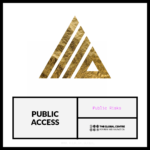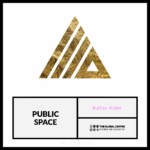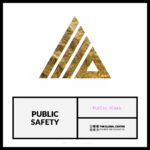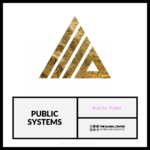The Nexus Reports provide comprehensive evaluations of country-specific risks and opportunities, focusing on biodiversity, ecosystem services, climate change vulnerabilities, socio-economic risks, the food-water-energy nexus, and exponential technologies. Drawing on authoritative sources, these reports offer tailored policy recommendations, detailed analyses, and practical case studies, integrating global scientific research to manage risks and drive sustainable development
Nexus Observatory
Public Risks
Welcome to GCRI’s Public Risks Nexus, where NE lab synergy, AI-driven intelligence, and multi-sensor geospatial data unite to strengthen society’s front line against rapidly evolving threats. From infectious disease surges and disaster escalations to infrastructure failures and social unrest, our integrative approach preempts chaos by fusing parametric finance triggers, HPC-grade meltdown modeling, and targeted capacity-building. By bridging government agencies, corporates, and community stakeholders, GCRI forges resilient policies, swift resource deployment, and robust training—ensuring that no crisis overwhelms our collective capacity to respond, recover, and rebuild
Satellite Fusion
Consolidates multi-constellation satellite imagery into a unified repository for public safety insights. AI-driven analytics detect crowd movements, infrastructure damage, and environmental hazards in near-real time. Boosts rapid coordination in emergencies—from civil unrest to disaster crises—by highlighting risk zones and resources
Hyperspectral Insight
Captures fine-grained spectral data across advanced sensors to monitor pollution, vegetation stress, or water quality. Machine learning identifies silent threats such as contaminant plumes or disease vector breeding grounds. Allows proactive measures against toxic leaks, community health hazards, or resource scarcities affecting public welfare
GeoAI Modeling
Employs deep learning with Earth observation and GIS overlays to map emerging risks and evolving threats across populated areas. Forecasts crime hotspots, epidemic spread, or critical infrastructure stress under multiple scenarios. Guides integrated approaches for law enforcement, disaster relief, and social services in crisis zones
Parametric Triggers
Uses NE’s hazard forecasting to define automated thresholds—like epidemic growth rates or flood water levels. Unlocks immediate relief funding or escalates emergency measures when public risk indices surpass safe margins. Facilitates agile, cross-agency mobilization of resources for community protection, food distribution, or medical supply
Digital Twins
Constructs immersive 3D replicas of urban centers, transit networks, or entire municipalities. Fuses sensor data, satellite feeds, and NE simulations to test emergency scenarios (earthquakes, riots, pandemic surges). Informs strategic asset defense, crowd management, and resilient public infrastructure upgrades
Innovation Labs
Runs specialized cohorts with WILPs and ILA integrating NE analytics for breakthrough public safety solutions. Nexus Platforms merge AI-based early warning systems and parametric coverage to address real-life emergencies. Yields GCRI-endorsed credentials validating expertise in civic resilience, security, and social innovation
Multisensor Mosaics
Blends radar, optical, and thermal data into consolidated mosaics focused on high-density areas or critical sites. ML-based classification highlights anomalies—collapsed structures, firefighting progress, or hazardous gatherings. Aids local authorities, emergency services, and media in near-real-time event monitoring and response
Edge-Cloud Synergy
Runs AI modules at local sensor edges (street cams, drones) and NE cloud clusters for bigger data processing. Triggers immediate alerts for crowd surges, road blockages, or chemical spills, while deeper analytics run remotely. Reduces lag, ensuring swift threat identification and proactive emergency steps for public safety
Anomaly Tracking
Leverages time-series ML across historical EO archives and real-time feeds for abrupt shifts—migratory flows, social unrest, supply breakdowns. Flags spikes or dips in public risk metrics, linking them to parametric finance for resource unlocking. Enables multi-layer correlation of societal data, enabling AAP across security, healthcare, and civil defense
Trusted By World Leaders
Our leadership is earned through proactive, cutting-edge solutions and initiatives that tackle urgent challenges while balancing immediate impact with long-term sustainability. Strengthened by strategic partnerships with global powerhouses, GCRI sets a new standard for protection and progress in an era of unprecedened risks and opportunities

Our National Working Groups (NWGs) converge to shape a future defined by resilience , innovation , and collaboration. By uniting diverse perspectives through a seamless hybrid model, we ignites breakthrough innovations and fosters dynamic partnerships that secure a brighter, more sustainable future for all
Unlocking the Power of Spatial Finance 🌌 for Disaster Readiness 📡
Transforming risk management by integrating DRR, DRF, and DRI into a seamless, proactive system. Leveraging cutting-edge geospatial analytics and innovative financial triggers, NE enables real-time insights and rapid resource mobilization to build resilient communities and drive sustainable growth
Infectious Outbreaks & Pandemic Surges
NE lab merges epidemiological data, Earth observation–based population mapping, and AI-driven disease modeling to forecast hotspots. Parametric triggers release funds for testing kits, mobile clinics, or vaccine stockpiles when case thresholds exceed safe margins. Empowers health agencies, corporates, and NGOs to orchestrate rapid, data-validated outbreak containment
Disaster Risks
Floods, hurricanes, earthquakes, and wildfires can devastate lives and disrupt entire economies. NE-lab meltdown scenario modeling interlaces real-time meteorological data with geospatial intelligence, activating parametric expansions once hazard signals peak. Structured cohorts unify emergency services, insurers, and local communities for coordinated, resilient disaster preparedness
Corruption & Governance Collapse
Failing public systems, corruption, or power vacuums erode civic trust and basic service delivery. NE lab meltdown scanning flags administrative bottlenecks or suspicious resource misallocations, prompting parametric coverage for immediate governance support. Training modules equip officials and reform advocates with robust e-governance tools and meltdown-prevention strategies
Urban Overstretch & Resource Scarcity
Uncontrolled urban growth strains water supplies, waste management, and emergency services. NE lab meltdown scenario tests unify population densities, logistic constraints, and parametric expansions to handle surges in demand. Cohorts teach municipal leaders and private stakeholders to design multi-purpose solutions ensuring equitable, sustainable city environments
Exposure & Pollution Emergencies
Toxic leaks, industrial discharge, or airborne contaminants pose acute public health hazards. NE-lab anomaly tracking quickly detects abnormal pollutant levels in key waterways, soils, or atmospheric pockets, triggering parametric coverage for cleanup. Dedicated training fosters advanced EHS oversight, bridging HPC-lab workflows with local enforcement to minimize ecological harm
Critical Infrastructure Breakdowns
Power grids, water services, or transit networks can collapse under intense stress. NE lab aggregates sensor feeds, satellite anomaly scans, and meltdown analytics to pinpoint vulnerabilities and route parametric coverage for immediate repairs. Specialized training helps city engineers and corporate partners embed meltdown-proof designs into essential infrastructure
Social Equity & Civil Tensions
Deep inequities—healthcare gaps, underfunded schools, contested rights—can trigger unrest and displace communities. NE lab synergy merges socio-economic data with live satellite crowd analytics to detect tension build-ups, parametric expansions fund outreach programs. Enables inclusive policymaking, bridging HPC-level meltdown intelligence with sustainable social interventions
Mass Displacement & Refugee Influx
War, climate shocks, or failing local economies can force large-scale human migrations. NE lab meltdown analytics integrate migration routes, Earth observation of temporary encampments, and parametric triggers for swift humanitarian relief. Structured cohorts unify ministries, NGOs, and corporate sponsors for organized resettlement, resource provisioning, and integration efforts
Misinformation & Public Trust Erosion
Viral rumors or manipulative disinformation campaigns can undermine crisis responses and fracture social unity. NE-lab synergy monitors social media signals, parametric expansions fund rapid outreach once trust indicators dip below safe baselines. Training fosters meltdown-level communications strategies, bridging HPC-grade data checks with transparent crisis messaging
Cyber Attacks on Public Systems
Digital intrusions targeting emergency dispatch, hospital networks, or municipal data can paralyze essential services. NE-lab meltdown watchers correlate ICS logs, satellite-based facility checks, and parametric triggers to contain advanced cyber infiltration. Micro-credentials guide local IT teams, security officials, and corporate partners in meltdown-lens threat detection and continuity planning
Future Innovation Labs
Innovation Lab
Discover;
Learn;
Build;
We support innovation, collaboration and knowledge-sharing amongst our members, partners and the broader research, development, and education communities. Our WILPs streamline the identification, mitigation, and evaluation of Risks, followed by the optimal use of GRIx to tackle Issues and manage adverse impacts. They provide secure network platforms that enable citizens to participate in MPM and use iVRS to report risks and values anywhere. Risk Pathways deliver out-of-the-box CRS functionality to meet institutional requirements, including SCF taxonomies for digital-green skills, compliance frameworks and real-time validation systems. They help members and QH stakeholders with DICE to navigate essential resources and find the right levers across the public-private-planet landscape.
MPM
Integrated pathways for existing national portfolios on the right to inclusive education, skills development, and career mobility through LLL for all
CRS
Rewarding participation with utility value across the network to increase interoperability and career mobility
DICE
Next-generation of internet for risk and innovation in pluralistic societies
GRIx
Open source standard indexing system for linked open data set about global risk and humanitarian crisis.
iVRS
Stakeholder engagement and reporting mechanism for Environmental, Social and Governance (ESG) risks and impacts
SCF
Frameworks, skills taxonomies, competencies and policies for the twin digital-green transition
Research
0%
Design
0%
Innovation
0%
Acceleration
0%
Policy
0%
Public Access Risks
8 Steps
- Join “Risk Management” Streams
- Complete the lesson Introduction to Public Access Risks
- Unlock SDGs
- Publish a proposal on Public Access Risks
- Reach Social Impact Assessment (SIA) Level I
- Reach Environmental Impact Assessment (EIA) level I
- Reach Governance Impact Assessment (GIA) Level I
- Join Hackathons
Public Space Risks
9 Steps
- Join “Risk Management” Streams
- Complete the lesson Introduction to Public Space
- Unlock SDGs
- Publish a proposal on Public Space Risks
- Reach Social Impact Assessment (SIA) Level I
- Reach Environmental Impact Assessment (EIA) level I
- Reach Governance Impact Assessment (GIA) Level I
- Reach Systems Level Impact Assessment (SLIA) Level I
- Join Hackathons
Public Safety Risks
9 Steps
- Join “Risk Management” Streams
- Complete the lesson Introduction to Public Safety Risks
- Unlock SDGs
- Publish a proposal on Public Safety Risks
- Reach Social Impact Assessment (SIA) Level I
- Reach Health Impact Assessments (HIA) Level I
- Reach Environmental Impact Assessment (EIA) level I
- Reach Systems Level Impact Assessment (SLIA) Level I
- Join Hackathons
Public Systems Risks
10 Steps
- Join “Risk Management” Streams
- Complete the lesson Introduction to Public Systems Risks
- Unlock SDGs
- Publish a proposal on Public Systems Risks
- Reach Health Impact Assessments (HIA) Level I
- Reach Social Impact Assessment (SIA) Level I
- Reach Environmental Impact Assessment (EIA) level I
- Reach Health Impact Assessments (HIA) Level I
- Reach Governance Impact Assessment (GIA) Level I
- Join Hackathons
Public Goods Risks
9 Steps
- Join “Risk Management” Streams
- Complete the lesson Introduction to Public Goods Risks
- Unlock SDGs
- Publish a proposal on Public Goods Risks
- Reach Social Impact Assessment (SIA) Level I
- Reach Environmental Impact Assessment (EIA) level I
- Reach Governance Impact Assessment (GIA) Level I
- Reach Systems Level Impact Assessment (SLIA) Level I
- Join Hackathons





